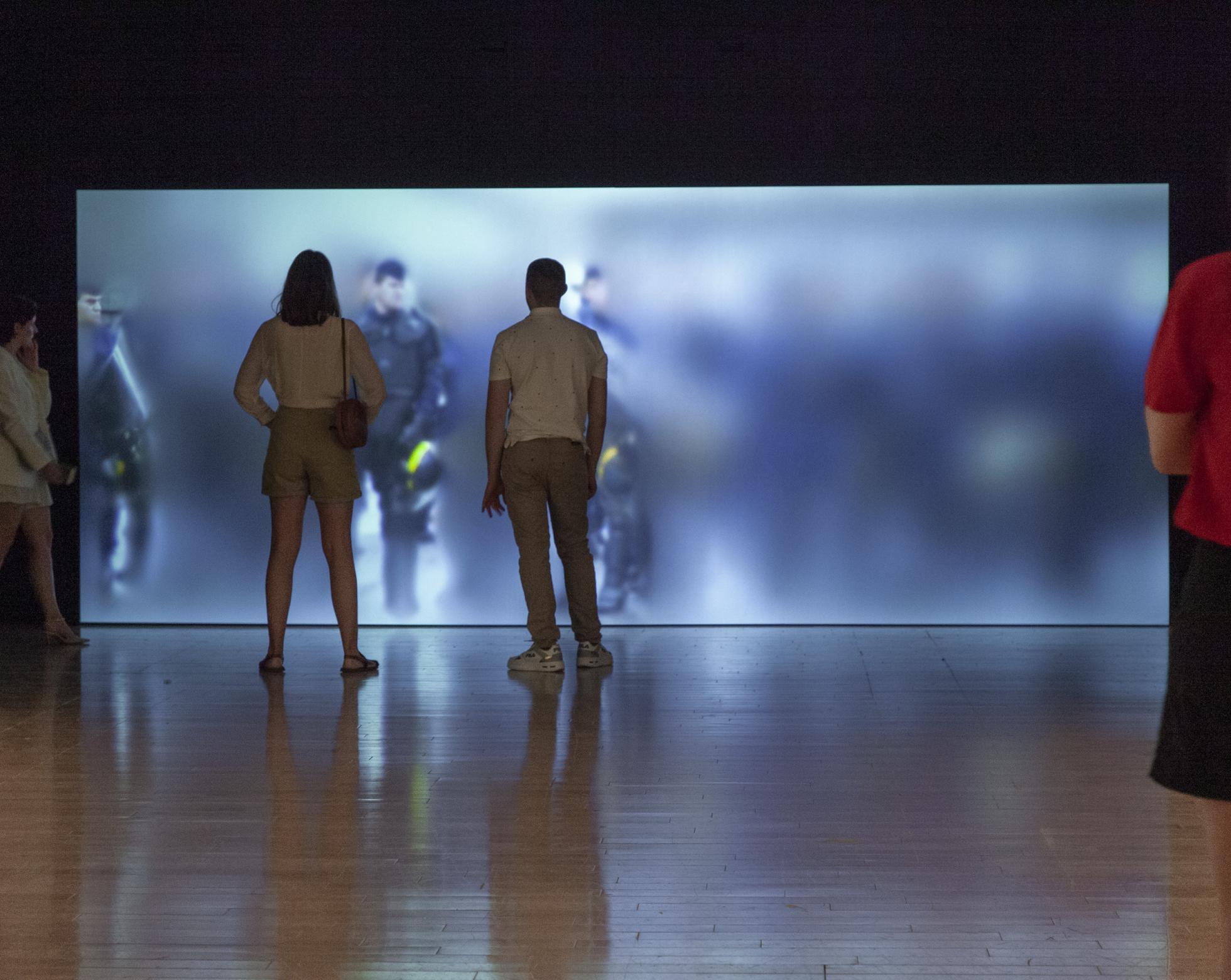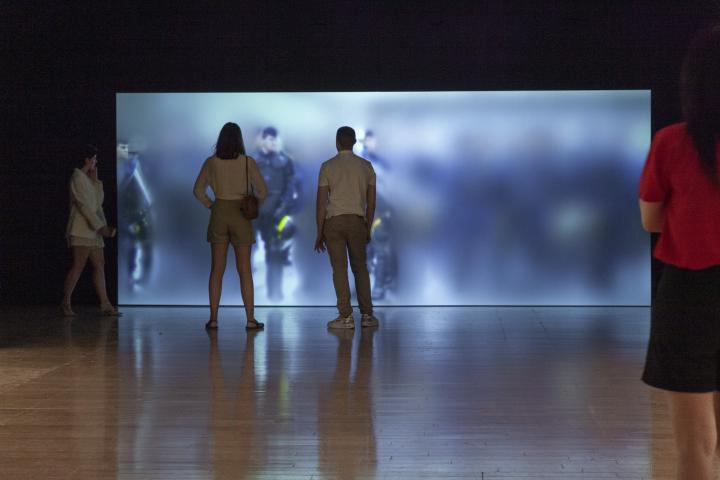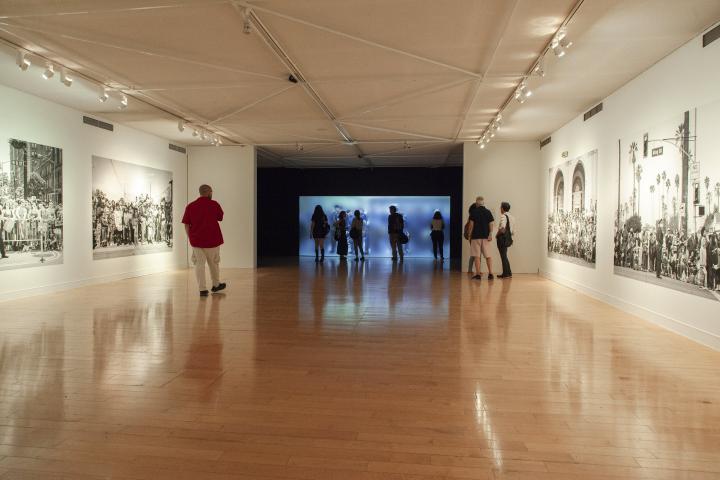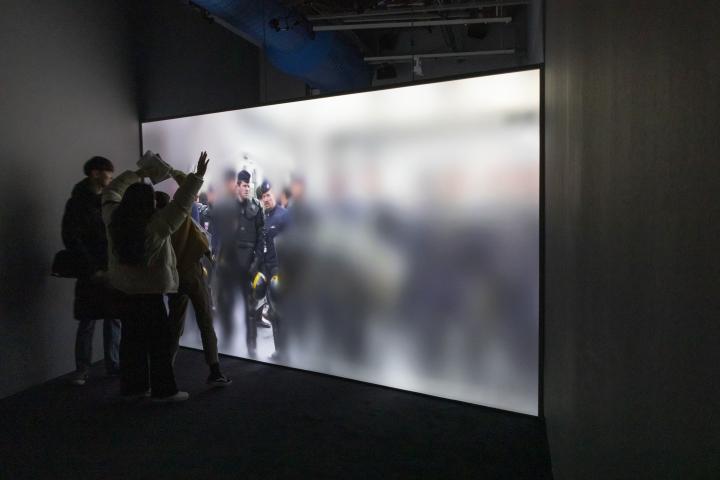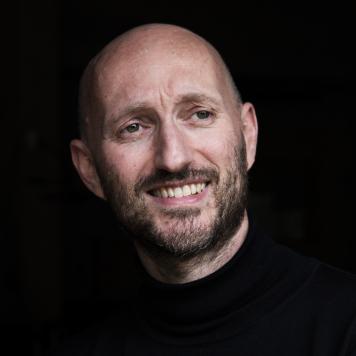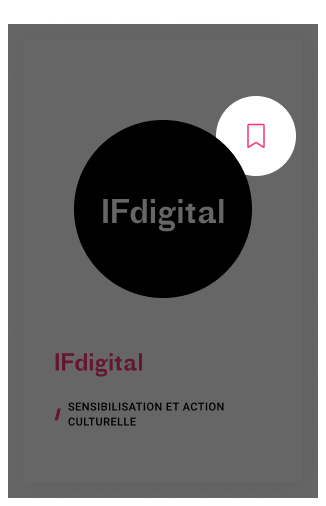Interactive installation, 2007-2022. niform is an interactive installation. In a large dark room, an image takes up the entire wall opposite the spectators. The image, at first still and out of focus, is composed of a group of some twenty, life-sized men.
niform
Find out more
niform is an interactive installation. In a large dark room, an image takes up the entire wall opposite the spectators. The image, at first still and out of focus, is composed of a group of some twenty, life-sized men. Rendering the image homogeneous is not only its blurriness, but also the uniform clothing of the line of policemen standing in riot gear.The spectators' movements impact the coming-into-focus of the image: as they approach, and depending on the shape of their bodies, different parts of the facing image become increasingly sharper. Standing less than fifty centimeters from the image, the spectator finds himself face to face with a representative of law and order. The image does not have only one focal point or depth of field, but several at once. These, however, are localized and individualized: they vary depending on the position of the different spectators. Starting with a uniform image, each viewer reveals, with his approach, a singular human being, an individual who stands facing him.
Credits:
Engineering (image capture and treatment): Colin Bouvry (2020-2022 version), Adrien Mazaud (2012 version), ExperiensS - Thomas Bouaziz and Yoan Leyris (2007 version)
Technical production (2012 version): Yann Creac’h
Assistant (2007 version): Oussama Mubarak
Original photograph: Jérémie Giniaux-Kats
A CiTu, Dispothèque, Numeriscausa and Bouillants co-production, with the scientific collaboration of the Laboratoire d’Informatique pour la Mécanique et les Sciences de l’Ingénieur (LIMSI-CNRS), with the advice and support of Sylvie Tissot, Paul Girard and Stéphane Maguet.
This project was funded in part by the Ministry of Culture & Communication (DICRéAM program) and the City of Paris.
The 2020 version use the Zilhouette software developped by Colin Bouvry in the framework of the Reflective Interaction Group of EnsadLab, laboratory of The École nationale supérieure des Arts Décoratifs (EnsAD), PSL University (Paris Sciences et Lettres) with the support of The Chaire arts.
Votre contact

Merci pour votre contribution.
Vous serez informés de sa publication ou d’une éventuelle demande de compléments.





